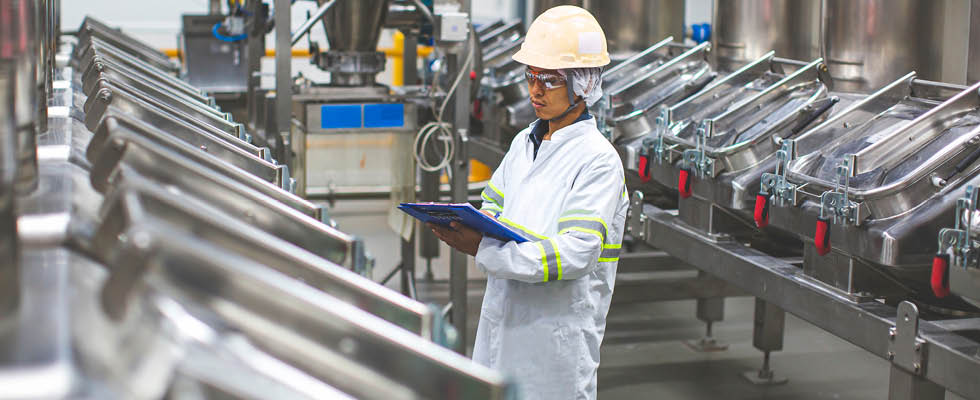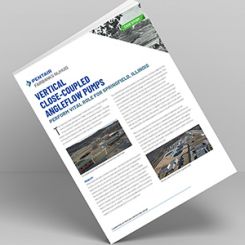
In a world where energy prices are rising and climate concerns continue to mount, food and beverage manufacturers are under pressure to improve efficiencies and reduce emissions. To date, more than 400 of the world’s largest companies—many of them in the food and beverage industry—have vowed to achieve net-zero emissions by 2040. This all comes with the backdrop of cultural and public demand to move toward renewable energy.
Though progress on that front is being made, outright switching to renewables comes with its own set of challenges, including overcoming the intermittent nature of certain renewable energy sources (like solar and wind), the lack of availability of suitable sites for renewable installations and the upfront costs associated with transitioning to renewable energy systems. The truth is, we are not yet at a place where renewables are viable, and industry-wide switches would put the current grid infrastructure at risk and drive costs even higher. We are still at least decades away from a world powered largely by renewables.
A viable solution for decarbonization that has gained attention recently is heat pumps. More precisely, using heat pumps to recover waste heat and utilize it to power the facilities that give off this energy, which is otherwise lost in the atmosphere.
According to numerous studies, between 50% and 80% of the primary energy input used for thermal purposes in light industry manufacturing facilities leaves the plants as waste heat. Just a small fraction of that fossil fuel-generated energy input is actually used for manufacturing the product, whereas the rest is released in the form of hot exhaust gases or through cooling towers and drains.
It is true the quality of energy contained in waste heat has been degraded, but the quantity of energy it contains is still significant. Harnessing the power of waste heat could be the single fastest and most cost-effective way to achieve net-zero emissions. But how?
Most of today’s food processing plants were built more than 50 years ago and have an immense opportunity to minimize waste heat and optimize efficiencies within each plant’s current processes. For example, food processing requires a great deal of energy for sterilization and cold storage. This leads to a lot of waste heat during the cooling process, while the factory concurrently needs heat at relatively low temperatures (below 250 F) to operate effectively. Studies allow the ability to map out the thermal processes of these plants and facilities with certain tools to find out where the heat is going, monitor performance and flag failures. This provides experienced engineers with precise information that can be utilized to minimize a plant’s energy waste, optimize its thermal energy efficiency and build a strategy for complete decarbonization.
Known as thermal mapping, the process involves mapping all heat sources (processes that are cooled down and where energy is removed) and heat sinks (processes that require heat and where energy is added) in the facility, followed by identifying the temperatures, the kilowatts needed to be added or removed and seasonality (detecting whether there is a different load in summer versus winter and whether the load is stable throughout the day and night). Once the mapping is finalized, the thermal energy manager can identify the heat recovery potential, as well as the minimum amount of energy needed for the plant, if all waste is recovered.
As mentioned before, the heat pump captures a stream of waste heat and channels it back into the process where it is needed. This is the engine behind this process for improving a plant’s thermal efficiency and reducing its negative impact on the environment. The three-step process includes de-steaming (conversion to pressurized hot water) all applications below 250 F, recovering direct heat when a positive differential temperature is available and using industrial heat pumps for raising the temperature of low-grade heat to the temperature that is useful for the process.
While a certain amount of electricity is needed to power the heat pump compressors, the energy consumption in a plant that utilizes this approach is up to 80% less than the amount consumed traditionally. The final approximate 20% of greenhouse gases needed to power the plant and internal processes is limited enough that it can be supplemented with renewable sources—enabling companies to reach a net-zero outcome.
It should be noted this approach’s limited reliance on renewable energy (as opposed to an industry powered solely by renewables) would protect the grid from reaching critically over-burdened situations and help keep energy demand and costs lower, especially during this global transition to net-zero emissions. The savings achieved by companies and the entire industry could then be invested in newer technologies and more efficient solutions.
By using high-temperature industrial heat pumps to recover, upgrade and reuse the heat wasted in industrial plants, industries can lower the bar for thermal decarbonization and reduce the amount of renewable energy required to run these plants in the future.
Globally, the transformation of existing sites and the design of new systems using this new methodology are already in progress, and the food and beverage industry is poised to benefit perhaps the greatest from this solution due to the processing requirements for the sterilization and heating/cooling of food products.

